Phylum Chordata Rank Species | Order Gobiesociformes Scientific name Diademichthys lineatus Higher classification Diademichthys | |
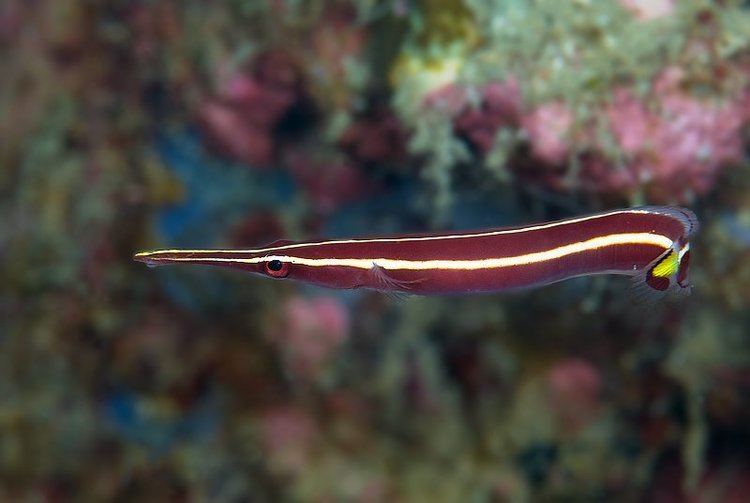 | ||
Genus DiademichthysPfaff, 1942 Similar Gobiesocidae, Lepadogaster candolii, Lepadichthys, Diplecogaster, Northern clingfish | ||
Diademichthys lineatus
Diademichthys lineatus, known commonly as the long-snout clingfish or urchin clingfish, is a species of marine fish in the family Gobiesocidae.
Contents
- Diademichthys lineatus
- Diademichthys lineatus mpg
- Distribution habitat
- Description
- Alimentation
- References
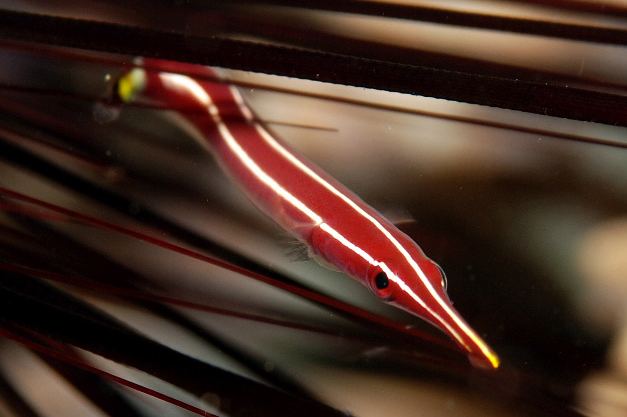
Diademichthys lineatus mpg
Distribution & habitat
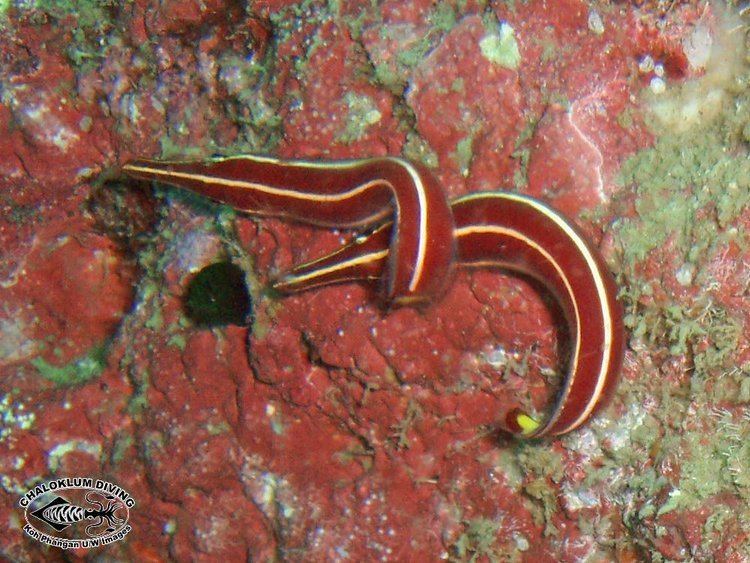
Long-snout clingfish is widespread throughout the tropical waters of the Indo-West Pacific region from the Gulf of Oman to Papua New Guinea.
It is found in reef environments often associated with long-spined sea urchins particularly of the genus Diadema.
Description
Long-snout clingfish is a small size fish, it grows up to 5 centimetres (2.0 in).
Its body is elongated with a stretched and spatulate snout. The latter is a criteria for recognizing the sex of the fish, females have a longer and finer snout than males. This sexual dimorphism create a different diet between the two sex.
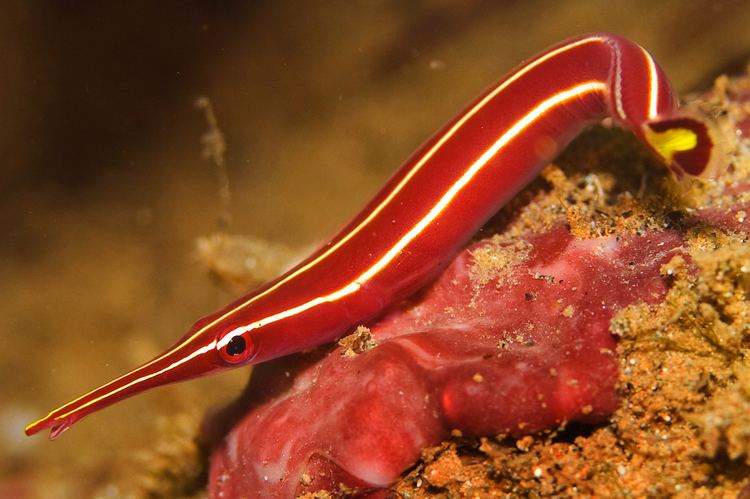
The body background colour varies from dark brown to red-brown, three yellowish longitudinal lines runs along the body, one on the top and the two others on the median axis of the sides of the fish. The caudal fin is marked in its centre by a yellow spot, the snout can also have some yellow.
Alimentation
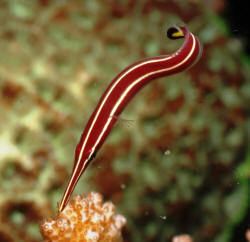
Long-snout clingfish feeds mainly on burrowing bivalves in corals, tube feet of their host and eggs of a commensal shrimp. The sexual dimorphism induce a difference between male and female diet, so the adult female, having a longer snout, eats more often small bivalves and shrimp's eggs than the adult male, which eat more frequently tube feet.
